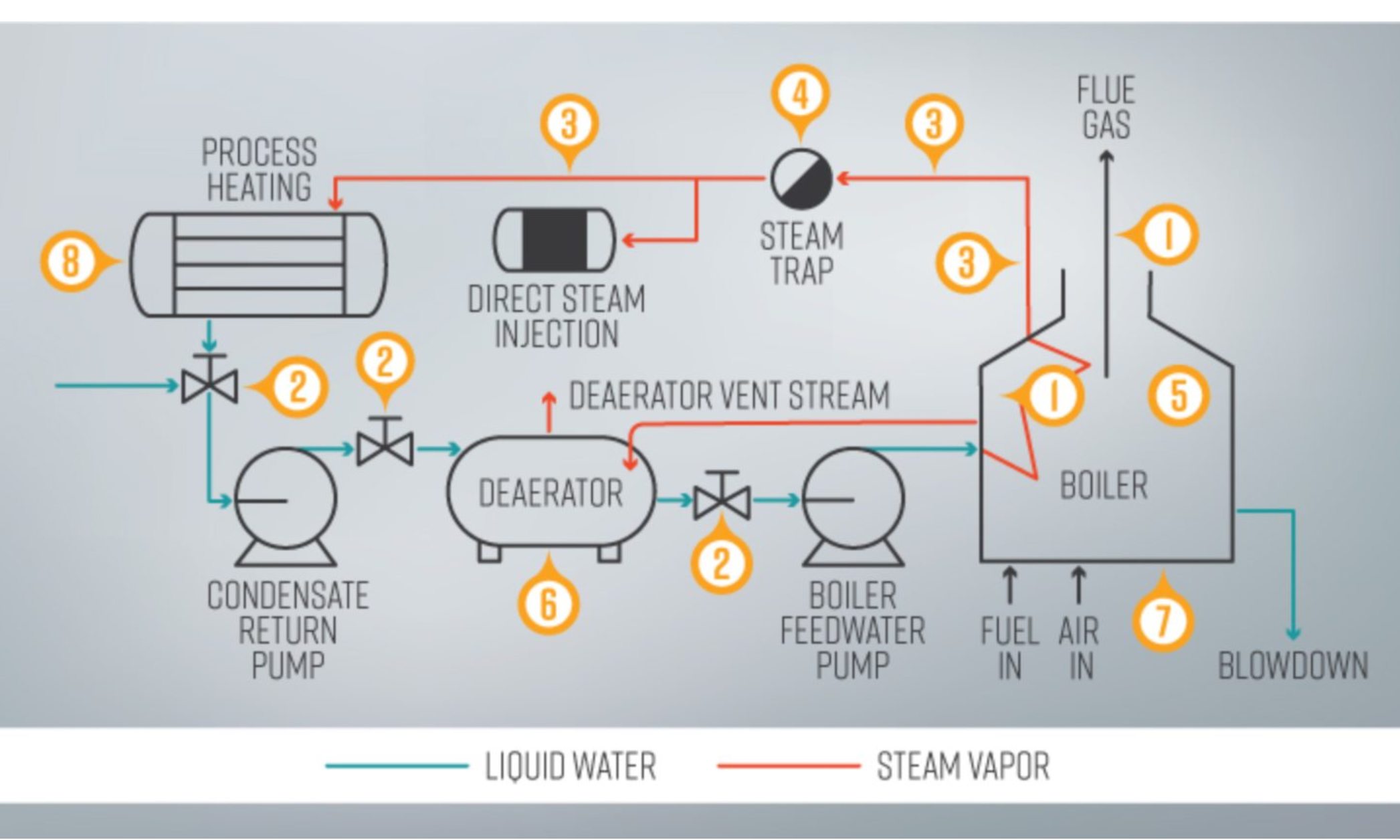Looking to reduce your natural gas bills without a long-term financial investment? These energy-saving maintenance projects and low-cost equipment upgrades can pay for themselves quickly.
1. Inspect and recalibrate furnace thermocouples
This will help you obtain more accurate temperature measurements and increase boiler efficiency.
2. Install removable insulation on valves, pipes and fittings
Insulating these components can significantly reduce heat loss in your steam distribution system. This not only saves energy, but helps protect personnel from burn and other hazards.
3. Check for system leaks
Inspect steam distribution systems for leaks and repair where necessary. Possible sources of unnoticed leaks include piping, valves, process equipment, steam traps, flanges and seals.
4. Keep strainers clean
Regularly clean strainers upstream of steam traps to prevent particle accumulation. Excessive deposition can hasten the need for repair or replacement.
5. Reduce boiler water temperature
Lower the water temperature in boilers whenever possible, especially during autumn and spring. This can reduce short-cycle losses as well as radiant and convective heat losses.
6. Regularly inspect and clean water treatment systems
Prevent scale accumulation by ensuring water treatment systems are operating effectively. Scale build-up in boiler tubes inhibits both throughput and heat transfer.
7. Tune damper settings on boiler draft fans
Regularly check and adjust damper settings to minimize surplus combustion air. Also, make sure doors and other openings are properly sealed. Excess air in the combustion chamber can lead to heat loss in the boiler and other combustion equipment.
8. Adjust processing operations schedules
Rework the schedule of processing operations. For example, you can minimize the frequency of mixed and/or partial loads to reduce delays and reheat requirements.
Optimize your savings by making these strategies a part of an overall program to better manage your energy use. See Getting Started in Energy Efficiency from the U.S. Department of Energy's Better Plants program for more information.

